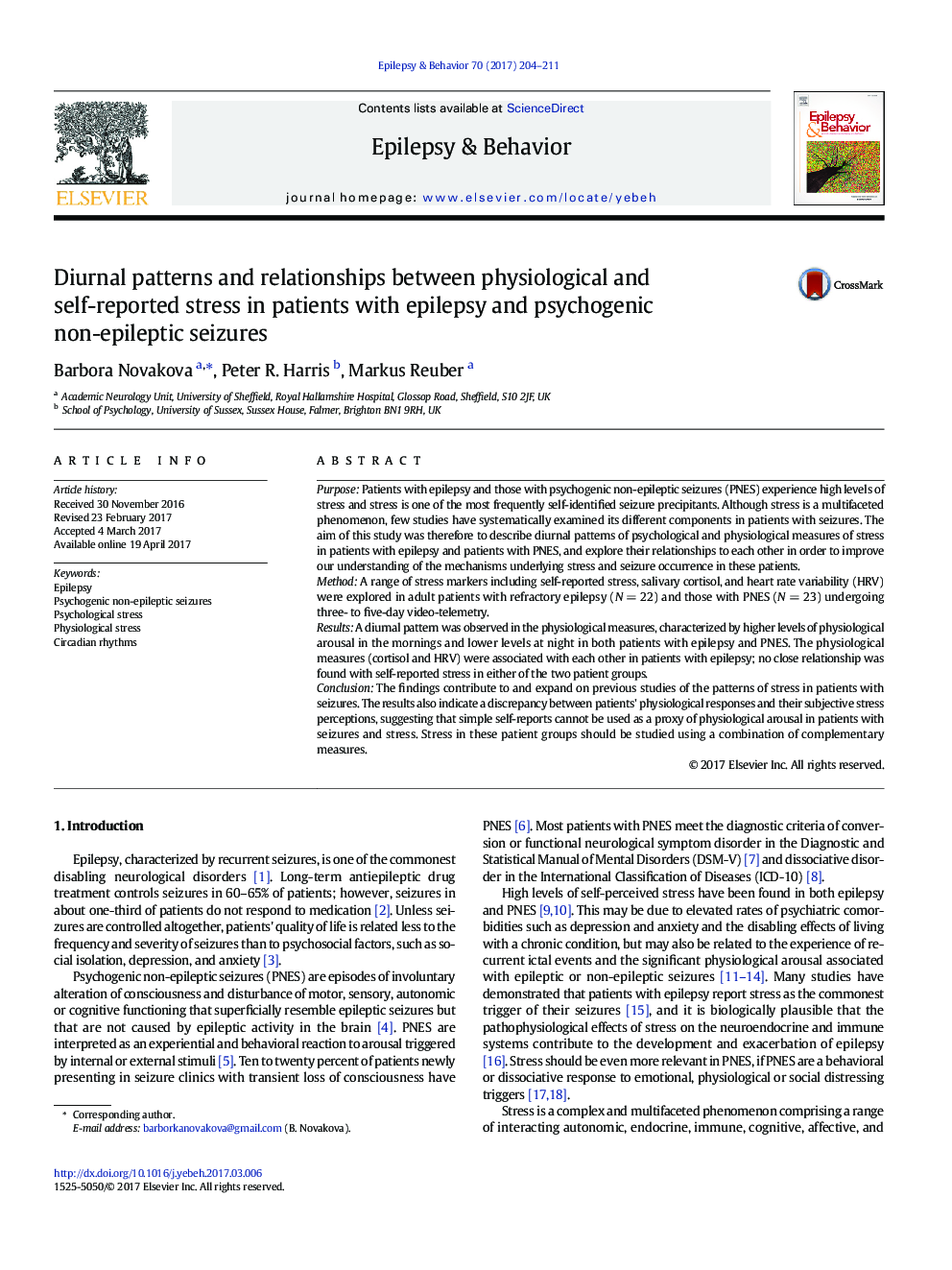| کد مقاله | کد نشریه | سال انتشار | مقاله انگلیسی | نسخه تمام متن |
|---|---|---|---|---|
| 5628306 | 1406370 | 2017 | 8 صفحه PDF | دانلود رایگان |
- Diurnal stress patterns were explored in patients with seizures.
- A pattern of higher morning and lower evening physiological arousal was observed.
- Physiological stress measures were correlated in patients with epilepsy.
- No correlation was found with self-reported stress in either of the patient groups.
- Self-reports cannot be used as a proxy of physiological arousal in these patients.
PurposePatients with epilepsy and those with psychogenic non-epileptic seizures (PNES) experience high levels of stress and stress is one of the most frequently self-identified seizure precipitants. Although stress is a multifaceted phenomenon, few studies have systematically examined its different components in patients with seizures. The aim of this study was therefore to describe diurnal patterns of psychological and physiological measures of stress in patients with epilepsy and patients with PNES, and explore their relationships to each other in order to improve our understanding of the mechanisms underlying stress and seizure occurrence in these patients.MethodA range of stress markers including self-reported stress, salivary cortisol, and heart rate variability (HRV) were explored in adult patients with refractory epilepsy (NÂ =Â 22) and those with PNES (NÂ =Â 23) undergoing three- to five-day video-telemetry.ResultsA diurnal pattern was observed in the physiological measures, characterized by higher levels of physiological arousal in the mornings and lower levels at night in both patients with epilepsy and PNES. The physiological measures (cortisol and HRV) were associated with each other in patients with epilepsy; no close relationship was found with self-reported stress in either of the two patient groups.ConclusionThe findings contribute to and expand on previous studies of the patterns of stress in patients with seizures. The results also indicate a discrepancy between patients' physiological responses and their subjective stress perceptions, suggesting that simple self-reports cannot be used as a proxy of physiological arousal in patients with seizures and stress. Stress in these patient groups should be studied using a combination of complementary measures.
Journal: Epilepsy & Behavior - Volume 70, Part A, May 2017, Pages 204-211
